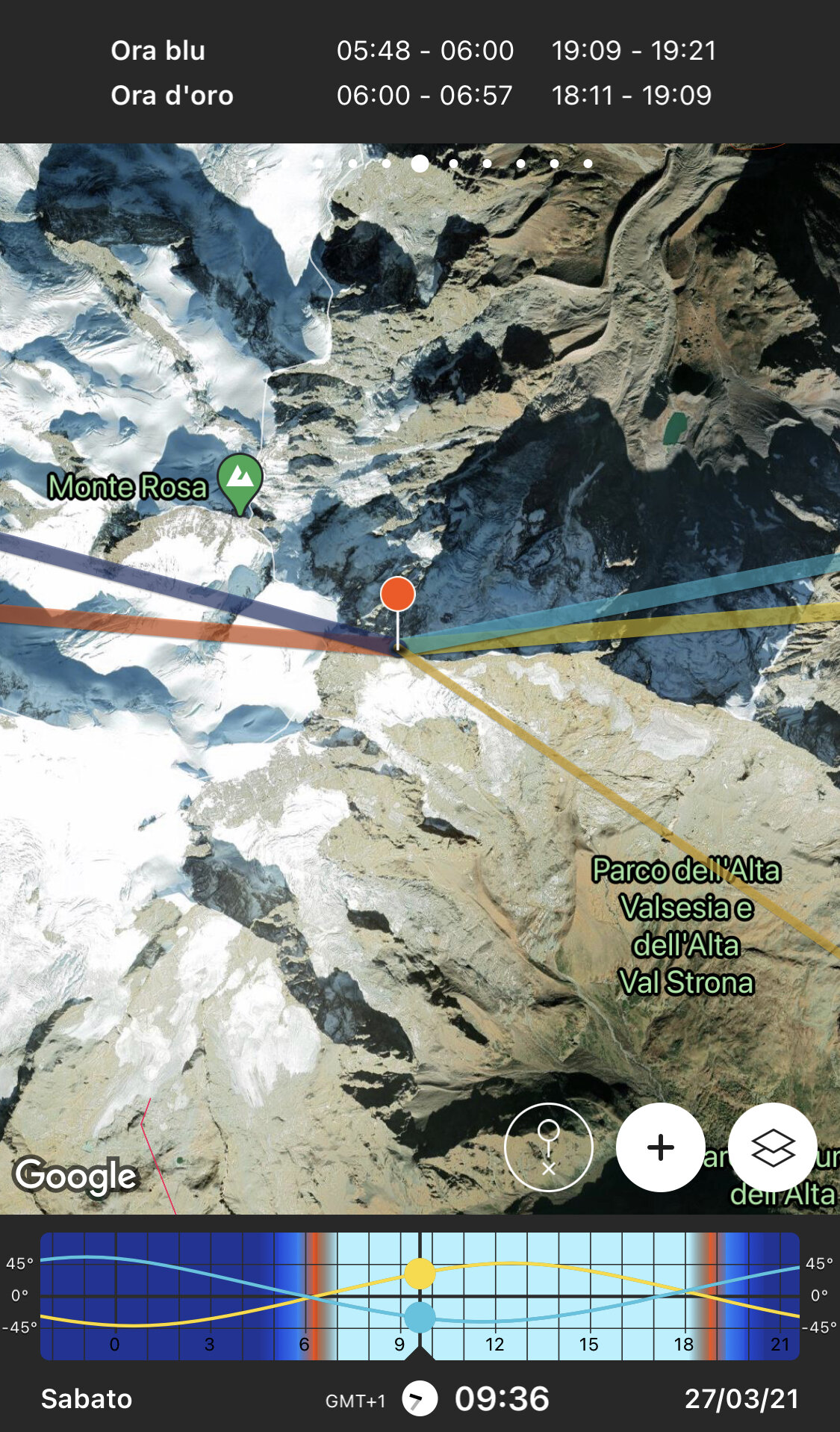One of the questions I get asked more frequently: “How do you manage to find the best light when shooting in the mountains?”
We all know that nature is a bit unpredictable and especially in the mountains it can be hard to predict how the light will play; luckily today we can access a lot of informations directly from our phone and we can always get an accurate idea about where the sun would be and how the weather will play in the next few hours.
These are my 4 fundamental apps I use every time to successfully plan a shoot in the mountains.
Google Earth
The first thing I need when planning a photoshoot is an overall idea of the mountain’s shape and orientation. Are we going to be up on a ridge on down into a valley? Is the place facing South, meaning we will be directly sunlit for the whole day, or we will be in the complete shade of a North face (on the southern hemisphere it would be the opposite)? Are we going for the best place, or there are some much better options nearby?
We can quickly answer to all of these questions by taking a look at the 3D render of the place on Google Earth; messing around a bit on the app it will give us a good idea of the landscape we will work with and where the sun will come from (looking at the little compass displayed at bottom).
Looking at this view, for example, we can understand the the mighty Cresta Signal on Monte Rosa is running East to West, with the South face on the left side, meaning we will always have one side in shade and one side in the sun through the whole day.
Photo Pills
Probably my favorite app, Photo Pills makes it super easy not only to understand at what time the sun will rise and set on a given location but it also shows the exact direction the light will come from at any time of the year. All we need to do is to open the planner tool, to place the pin in our chosen location and to set the date we will shoot; we will then get the time frames for golden hour, blue hour, angle of sunrise and angle of sunset.
Photo Pills is not free (it should cost around 5,00€ on the App Store) but the infos it provides makes it worth much more than that. Highly recommended.
Meteo Earth
In addition to the time of the day, the other significant factor that will effect our natural light is the weather. It can be super hard to predict sometimes and it can make or break our shoot: a little layer of fog can give us a magic, once in a lifetime light, but just a touch more would completely delete visibility.
While the only 100% accurate way to know if the weather will help us is to go out and shoot anyway, weather forecasts today are quite accurate, especially within 12-24 hours. There are countless apps and services available today; what I use when in the Alps/Europe is Meteo Blue, while when traveling internationally I found Meteo Earth to be quite reliable almost anywhere in the short term; one thing to note is that many remote places, lacking the amount of weather monitoring station we have in Europe an US, cannot provide a the same amount of real time informations to the forecasting services, resulting in much less accurate forecasts.
My advice here is to try different forecast services in your area and then to pick the one that prove to be the most reliable.
Sun Seeker
We are now on location, the sun is high and we need to know at what time it will come across that beautiful peak in front of us. What to do? Sun Seeker comes to help us in this kind of scenario: by opening the 3D view (bottom right) it will take our phone camera view, overlaying it with the sun path in the sky, showing us where it will appear at any time of the day.










